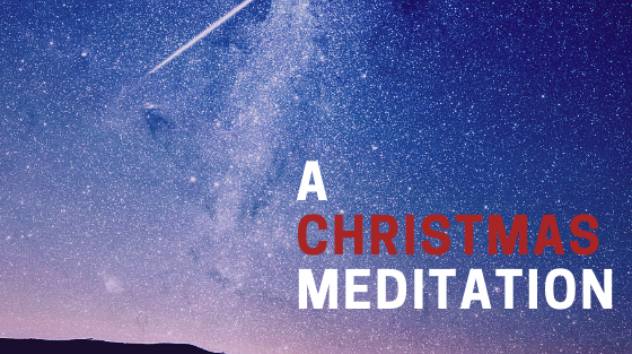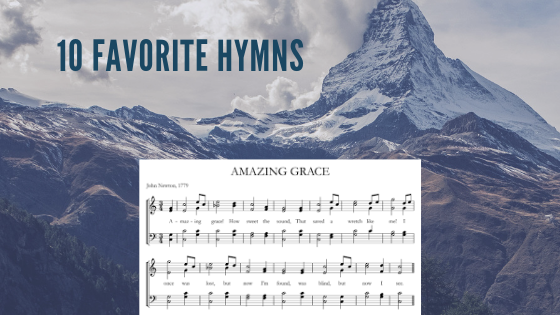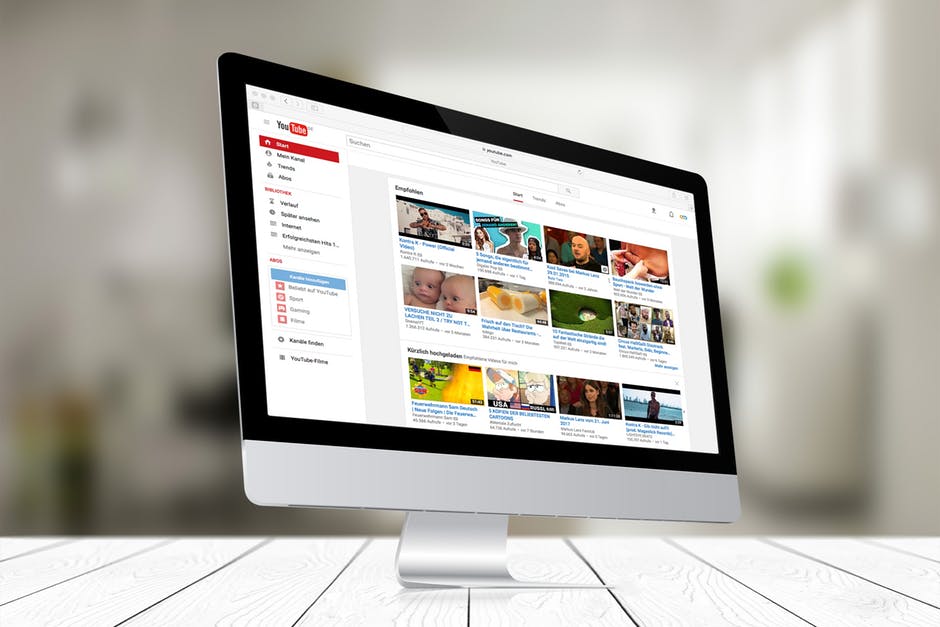
Month: December 2018


Ten Favorite Hymns
- Amazing Grace – It’s been said that you don’t appreciate the rescue until you feel the greatness of your need. Former slave-trader John Newton wrote this after a violent storm battered his vessel off the coast Ireland in 1748, so severely that he called out to God for mercy – the moment that marked his spiritual conversion.
- Crown Him with Many Crowns – This 1851 hymn with lyrics by Matthew Bridges and Godfrey Thring has some of the most beautiful lines of any hymns: “Behold his hands and side – rich wounds, yet visible above, in beauty glorified: no angel in the sky, can fully bear that sight, but downward bends his burning eye at mysteries so bright!” Drawn from verses like 2 Tim. 4:8 where believers are promised a “crown of righteousness” from the Lord, the imagery here is that they promptly cast them at the feet of Jesus to honor him who saved them by his cross and resurrection.
- A Mighty Fortress is Our God – Often referred to as “The Battle Hymn of the Reformation” and written by its chief spokesman, Martin Luther, this hymn uses the image of a fortified castle or ‘bulwark’ to evoke the power of God’s character and promises in the Gospel – a power that transcends all attempts to undo it, even death.
- Rock of Ages Cleft for Me – Reverend Augustus Toplady is said to have been traveling along a gorge in Burrington Combe, England in 1762, when a fierce tempest arose. He sought shelter beneath a massive stone, in a “cleft” – symbolizing the protection of Christ, “The Rock,” and penned these words.
- Blessed Assurance – Blind hymnwriter Fanny Crosby penned this hymn in 1873, as an expression of the incomparable comfort and confidence that the Gospel brings. This great gift of grace produces a “walking by faith instead of sight,” and a “foretaste of glory divine!”
- To God be the Glory – Another great Fanny Crosby hymn, it first caught on in Great Britain when Ira Sankey introduced it there during Moody’s 1873-1874 evangelistic campaigns. Despite this, the hymn was included in very few hymnals, but eventually saw a “revival” in 1954 when Cliff Barrows, song leader for Billy Graham, added it to the song book for the London Crusade. It turns out this was a perfect choice, as the hymn beautifully expresses God’s glory revealed in the wonders of grace: O perfect redemption, the purchase of blood, To every believer the promise of God; The vilest offender who truly believes, That moment from Jesus a pardon receives.
- And Can It Be – Charles Wesley wrote this hymn in 1738 to celebrate his conversion. Drawing a parallel to Peter’s experience in the New Testament, Wesley exulted: ‘My chains fell off, my heart was free/I rose, went forth, and followed thee.’
- Great is Thy Faithfulness – Thomas Chisholm penned this in 1923, utilizing the phrase “great is thy faithfulness” from the Book of Lamentations (3:23) to celebrate God’s faithfulness over his lifetime. Since that time many believers have drawn comfort from lines like: “… there is no shadow of turning with Thee; Thou changest not, Thy compassions they fail not, as Thou hast been, Thou forever wilt be.”
- Nothing but the Blood – Written by Robert Lowry in 1876, this hymn powerfully asks ‘What Can Wash Away’ the stain of my sin? As the refrain makes clear, only Jesus’ blood has this cleansing power, and and only Jesus gives his imputed righteousness to us, received by faith. The scriptural foundation for this song might be found in Hebrews 9:22, which reads, “without the shedding of blood there is no remission of sin.”
- Come Thou Fount – Written in 1758 by Robert Robinson, this great hymn flowed out of Robinson not long after his conversion at a George Whitefield Sermon. Regarding our worship, the hymn reminds us that “…streams of mercy, never ceasing, call for songs of loudest praise.”

Popular Passwords You Should Avoid
“Jesus is the answer to everything.” It’s an oft-quoted line in Sunday school classrooms, and a frequent focal point of your pastor’s sermons. Without expounding the theological implications, when it comes to accessing your Church’s website or other online accounts, the following caveat applies: “Beware of making Jesus your password.”
Hackers Know Your Name
Put yourself in the shoes (or behind the keyboard) of an astute hacker, eager to infiltrate your site with porn, or wreak havoc with your data. The absolute, “low-hanging fruit” for cracking your password is to use a name or common “dictionary word” – especially one that would be meaningful to you, or your church. “Jesus” or one of his associated names such as “Emmanuel,” or “Savior” are obvious ones; your church’s name is another. Even if you were to add numbers or special characters to the dictionary word, hackers have special crunching tools and standard word lists to draw on to “try all possibilities.” This is called “brute-force” password cracking, or a way of using a program that tries every character combination possible until your password is cracked.
If you really want to make life more difficult for a hacker, besides avoiding familiar names or popular verse identifiers (like John3:16) for passwords, here’s a simple practice to adopt:
Make it a habit to use at least one lowercase, one uppercase, one number, and one special character.
This practice may not throw a hacker off the path completely, but it will take him considerably longer to crack your password, and possibly even force him to give up. To illustrate: there are 208 billion possible combinations for an 8-character, all-lowercase password. By just altering your password with the use of a lowercase, uppercase, digits, and special characters, the number of possibilities jumps to over 1 quadrillion – which, by some estimates would take a hacker nearly ⅔ of a year to generate.
Hackers Have Your Number
Another simple rule of thumb for making a hacker’s life more difficult is to avoid using all numbers; eg., 0123456789, etc. This sequence, or others like anniversary dates or personal birthdays may be convenient for you to remember, but realize how easy you’ve made it for the hacker: with only 10 digits to choose from, a hacker can brute-force a 10-digit password in only 10 billion tries!
Hackers Can Be Thwarted
So here’s a summary of what we covered, along with some additional “good practices” for thwarting a hacker and maintaining strong passwords :
- Avoid using names and dictionary words
- Use at least one lowercase, one uppercase, one number, and one special character.
- Avoid using only numbers
In addition, the following “best practices” for passwords should be regularly observed:
- Change your password frequently, as often as every 3 – 6 months (lean toward the “more often” end for financial accounts like banking, etc.)
- Use different passwords on different accounts. (Why give a hacker access to all your accounts with just one password?)
- The use of a passphrase with all available character types inserted into it can be quite effective, eg: I<3ourSav1our&RChurch
- Utilize a password keeper or manager tool, like Keeper or LastPass, to help maintain strong passwords, and keep track of your passwords in a secure place.
Adopting the above basic practices will go a long way in protecting your site, keeping your accounts secure, and confusing a would-be hacker.

Streaming on YouTube and Facebook Live – Part 2
Are you harnessing the power of video and live streaming to attract people to your site? In a recent survey of marketing professionals, results showed that “… when both video and text are available on the same page, 72% of people would rather watch a video to learn about a product or service.” In other words, video content – especially content from live streaming – seems to have a greater personal appeal and ability to hold interest than mere text alone. But if the prospect of offering live streaming seems daunting for your ministry, Facebook and Youtube – two of the largest social media networks in the world – have made it easier than ever to leverage their platforms to give you a wider reach.

But how do the two compare? In our previous posts, we mentioned that YouTube – the second most popular website in the world – has the global reach and technical expertise to get your videos seen. Owned by Google – the world’s largest and most popular search engine – YouTube also has extensive security resources behind them. And, with longer possible streaming times than Facebook Live (36 hours compared to 240 minutes) and better resolutions (1080p vs 720p), YouTube Live would seem to have the edge in terms of overall quality comparisons.

Still, live streaming on Facebook is a great option, especially with Facebook’s unique ability to connect people into communities. Utilizing a network of Facebook “Friends,” videos tend to go viral quicker, with more videos reaching the million views per month mark than any other platform. The downside of FB, however, is how quickly the content “disappears” on user’s feeds (essentially, as long as it takes to be replaced by newer content). This means that while short-term exposure on FB is extremely high, the video will appear to fall into a digital “black hole” as newer feeds turn it into “older content” rather quickly.
In conclusion, when it comes to a comparison of video platforms, it would seem that intention plays a key role. For overall quality and staying power, “YouTube owns the hearts and wallets of marketers, who use the platform to raise awareness, educate consumers about a product, or drive them to purchase.” In a survey of close to 600 marketing professionals considering video for their 2018 plans, it’s no surprise that 87% had plans to utilize YouTube, over 70% for Facebook.

How to get Started on YouTube Live – Part 3
As mentioned in previous posts, YouTube Live is a great place to get started with livestreaming, and attract more traffic to your site. It’s never been easier to share your valuable story, and start growing your audience. And YouTube’s new mobile app provides a tab for sharing with your network directly on YouTube.
Note: A word before you start. In an age that increasingly craves authenticity, you’ll connect more with your audience if you’re relaxed and real. In other words, plan your shot well enough to ensure visual and audio clarity (see the link below for some basics), but don’t worry too much about perfection (e.g. the polished studio anchor on the evening news). For some basic tips and things to remember on set-up, see YouTube’s How to Produce a Successful Live Stream.
Depending on your goals, there are different set-ups you can use to live stream. They range from easy, less-formal set-ups (your smart phone) to better quality productions (using an HD camera or camcorder). Here’s the basic options:
- Mobile streaming (from your mobile phone) is great for quick “streaming on the go.” Mobile streaming has the benefit of portability (no suitcase full of video gear), spontaneity, and quick set-up. All you need is the camera on your mobile device, and an internet connection.
- Desktop Webcams also provide a quick and easy setup with a minimum of equipment, requiring only a computer (a newer, multprocessor computer is preferred), a webcam, and an internet connection. This is fine for up close streaming.
- Camera/camcorders are a better option for most sermon/teaching settings, providing more zooming options than a webcam, and allowing for the camera to be further away.
So how to get started?
Before you begin on YouTube Live, you must register for live streaming, then create your YouTube channel. This can be done in a couple of clicks:
- Simply sign into Youtube with your Google account, then click the “Create a Video or Post” icon (the camera symbol) at the top of the screen.
- Click on “Go Live” to register for live broadcasts, select your country and the method you want to receive a verification code. (If you enter your phone number, you can receive the code by text. Enter the code in the box, and your’re done). Note: You’ll need to wait 24 hours for YouTube to verify your account.
Now click on the camera icon again, and select “Go Live” to go the YouTube dashboard.
Create a new channel (if you don’t yet have one). Selecting a “brand account” allows you to add your ministry brand name, and multiple users to share one password. (Note: take some time to fill out your profile, add any links to social media, and a cover photo that helps introduce your ministry brand as well.) Then click Done.
You’re ready for Live streaming! You have the option to choose Stream Now, Events,
Here’s a link to help you understand the differences.

Benefits Live Video Streaming Part 1
You’re disappointed because you’ve been called away on business and will miss the worship service. An unexpected illness or injury has you facing a season of recuperation, and it’s unlikely you’ll be getting out much. Maybe you’ve even been called away to military service, but would love to stay connected to your home church as much as possible. Whatever the reason, the ability to catch the live stream of your church service may be the next best
thing to being there.
Live streaming technology, or the broadcasting of real-time video and audio over the internet to your computer, tablet, or smartphone, has now made “being there” – at least virtually – more achievable than ever.
Why Live Stream?
As mentioned, the ability to leverage live-streaming technology for the benefit of those who must be away for a time can be a valuable tool for a ministry. In addition, special events, guest speakers, and conference over-flow rooms may also be occasions when the convenience and intimacy of a live stream broadcast is a desirable option. (Keeping an archived version of the live-stream in your online library also allows later viewing for those who
might have missed, or for re-watching at a later date).
But there’s another great reason to consider streaming, and it has to do with recognizing how our culture relies on technology to gain knowledge before making an important investment of time. Consider the potential newcomer to your church. Streaming provides a way for them to hear a sermon from a distance, and gain a sense of your community before ever stepping through the church door. In other words, streaming allows for a less intimidating “first look” at the church and a consideration of its message from what feels for them to be a “safer place,” such as the comfort of their own home.
Finally, churches and organizations who take the plunge into live streaming routinely report a spike in traffic to their website – which in turn causes their ranking in Google to improve. This means that someone who performs a Google search for a church in your area will actually have a better chance of finding your site.
In our next post, we’ll examine how to begin live streaming.

Man Ai Gone Awry
Intelligent man was designed by our Creator. As Thomas Jefferson penned in the Declaration of Independence, “We hold these Truths to be self-evident, that all Men are created equal, that they are endowed by their Creator with certain unalienable Rights, that among these are Life, Liberty, and the Pursuit of Happiness….”.
The Creator designed man. From the Creator’s point of view, man is artificial intelligence or AI. Any intelligence created by a higher intelligence is AI from the perspective of the creative source or agent. The Creator endowed the human race with intelligence higher than any other creature. Human intelligence is awesome and powerful as is clearly evidenced from man’s own creativity and ingenuity.
Soon after the Creator made human AI, his AI began moving in a direction independent of his will and wishes. Man, as AI, wasted no time in adopting abhorrent practices spurred by jealousy. The AI he had so masterfully created, decided to pursue violence and strike one another down in acts of hatred and jealousy.
The Creator’s design went awry. Instead of living in harmony, the AI became brutal and self absorbed. Murder and violence became commonplace, and the Creator was disappointed with his creation.
The likes of Elon Musk and Bill Gates have predicted that AI created by man will likely become self-directed and take on a form of its own, going in a direction that man had not anticipated or desired. The media is replete with discussions of whether man’s AI will become rogue and fall headlong into reckless behavior.
My premise is that any intelligence that is given power to create intelligence (artificially) will eventually fall away from the creator’s original design, but only if the creature is endowed with the special elixir of free will. Without free will the creatures will behave themselves as expected; however, once the intoxicating elixir is introduced to the AI, at least some of the creatures will decide to chart their own reckless course, abandoning the creator’s master plan.
Humanity has birthed AI and is now wrestling with the same issues that our own Creator had to deal with. Given that humanity itself is AI gone awry, it is clear that if the explosive ingredient of free will is added, there will be consequences.

Extending Reach Youtube
As Christian churches continue to embrace the reality that an attractive online presence is key for connecting with members and extending their reach, the capability to post videos of sermons and other church activities is increasingly desired. While many platforms exist to host these videos, the most common is YouTube.
As one of the largest social media platforms, YouTube gets over 30 million visitors per day,
with half of all YouTube views coming from mobile devices. This amounts to nearly 5 billion videos watched every day. In addition, Youtube is available in 61 languages, across 75 different countries. With such mass market appeal, it’s easy to see how hosting sermons and outreach advertising through YouTube gives your congregation a powerful and accessible vehicle for extending your message on a global scale.
To start off, you must create a YouTube channel. This can be done easily by signing in with your Gmail credentials. Once you’re signed up for an account, simply click the upload files button to select your video file (YouTube supports most video formats, including .MP4, .MOV, .WMV, and more). Open your file, give it a title/description, and set your privacy setting to “Public.” Then choose any other advanced settings, save your work, and you’re ready to go.
(This tutorial can help you create your own Youtube channel)
Not only is YouTube great for reaching a global audience, but it saves you the cost of hosting and bandwidth, which can add up quickly with any type of videos. Truepath, a Christian web host, can help you setup your website with simple platforms and Youtube can easily be added to your website to keep the costs low when it comes to your web space.
In our next post, we’ll consider the benefits of streaming sermons live and saving past videos.

Top 5 Apps for Busy Church Leaders
Smartphones and tablets are quickly becoming a part of our daily lives, offering solutions for many of the things we do every day. Churches are also becoming aware of the potential positive uses that come with the use of these. With these technologies rapidly being used in the workplace, applications are being created to help offer solutions to the many problems businesses face. I want to share with you, a few useful applications that every church leader should use to take their ministry to the next level.
Planning Center
Planning Center is an amazing app that offers a range of products that simplifies the complicated process of running a congregation. The range of solutions offered includes sermon planning, church facility management, the organization of small groups and individuals of a congregation, organization of tithe and giving, and structured check-in for volunteers and children’s ministry. Each solution Planning Center offers can be worked into the specific needs of any congregation no matter what size. The app also has a range of costs depending on the desired capabilities starting with free basic features. Efforts made with the information using the various solutions allow for easy to understand reports.
Church Metrics
Church metrics is an app that makes tracking important numbers related to the health and growth of a church straightforward. This application takes information that can easily overwhelm most people and presents the information clearly and through simple visuals such as charts. Church Metrics takes the task of looking through past performance, as well as tracking trends and allows it to be customized specifically to the needs of each church. In order to push for continual growth, understanding past performance allows goals to be realistic. Church Metrics is part of Life.Church, which is a network of churches. This makes the support very strong, ensuring you make the most of this app. Church metrics also remains a free service that aims to be a resource for any church.
LEAD.
LEAD. is an amazing tool for small group leaders or someone who has to organize volunteers. A challenge many groups face that this app addresses, finding a way to keep everyone united. LEAD. offers many resources to allow leaders to see how engaged specific members of the church are and enables them to create profiles of each member. Each member’s profile also includes notes to keep track of specific information for future use. Scheduling features offer a simple way for members of the church to find the opportunity to serve and remain connected.
Evernote
Church leaders need organization systems that keep everything under their supervision well managed. Evernote takes care of this challenge by offering a resource that offers a range of means to organize various types of information. Notes are able to include sketches and diagrams allowing for quality work, well collaboration and simple methods to share and comment on content allow for easier communication with others. Evernote also utilizes a phone or tablet’s camera to integrate non-digital material. Leadership truly can benefit from all of these features and the ability to create presentations, lists and offer immediate feedback.
Wunderlist
Wunderlist takes a simple to-do list and allows a team or small group to easily collaborate. Tasks have the ability to have dates of completion added, well others can annotate the content and offer feedback. Wunderlist also has created the ability to easily share information through the internet in a way that maintains formatting. Simply put this platform takes the productivity of traditional apps, but makes it easier to interact in the workplace. When it comes to creating lists to make sure your team is all on the same page, Wunderlist is a simple but solid solution.